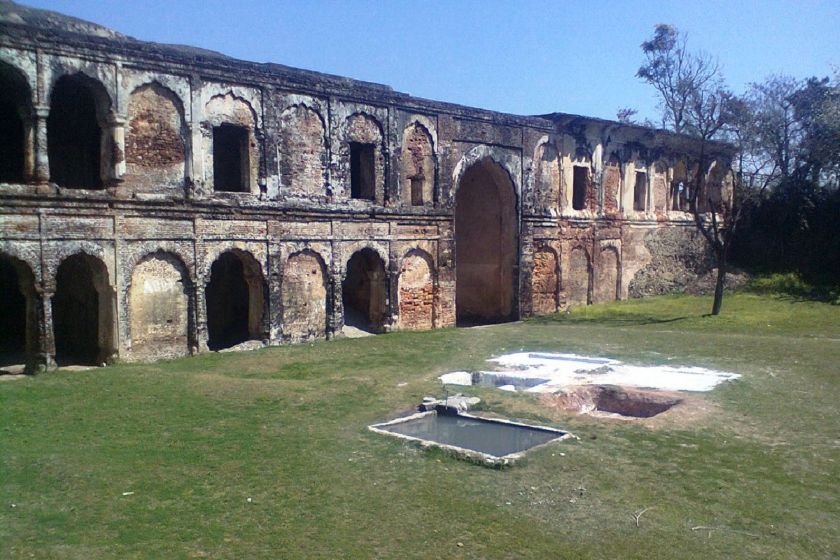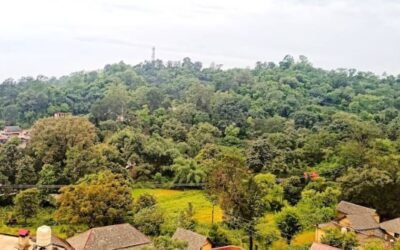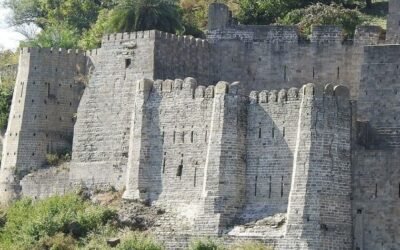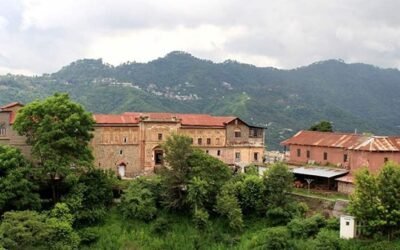📍 Location: Sujanpur Tira, ~22 km from Hamirpur Town
📅 Season: October–March for pleasant weather and clear views
A fort where art, architecture, and ancestry converge above the Beas River’s quiet flow
🕰️ Built by Abhay Chand, Embellished by Sansar Chand
Constructed in 1758 by Raja Abhay Chand, the fort later became the residence of Raja Sansar Chand, a patron of the Kangra School of miniature painting. For over a century, Sujanpur Tira served as the royal capital, hosting courts, festivals, and spiritual ceremonies.
🖼️ The fort’s walls once bore floral murals and mythological frescoes, many of which still whisper tales of Ramayana and Mahabharata.
🛕 Temples & Structures Within
The fort complex houses:
- Gauri Shankar Temple: Dedicated to Shiva and Parvati, adorned with Kangra-style wall paintings
- Narbadeshwar Temple: A Shiva shrine with intricate carvings and spiritual ambiance
- Baradari Hall: Once the royal court, now a silent echo chamber of regal decisions
- Chamunda Devi & Murlimanohar Temples: Built by Sansar Chand and his queen, blending Nagara and Mughal styles
🏛️ These temples reflect a fusion of Indo-Saracenic and traditional Himachali architecture, rare in hill forts.
🌄 Scenic & Cultural Significance
- Overlooks the Chougan, a vast ground once used for military training—now hosting fairs and festivals
- Offers panoramic views of the Beas River and surrounding valleys
- Hosts the International Holi Fair, a vibrant cultural event drawing thousands
🧭 Plan Your Visit
| 🗺️ Travel Tips | 🏡 Stay Options |
|---|---|
| Reach via Hamirpur–Sujanpur Road (~22 km) | Guesthouses in Sujanpur or hotels in Hamirpur |
| Nearest railhead: Pathankot (~130 km) | Combine with Nadaun Fort, Awah Devi Temple, or Deotsidh Shrine |
| Entry Fee: ₹20–₹50 | Open daily: 9 AM – 6 PM |
✨ Why It Belongs in Your Guide
Sujanpur Tira Fort reflects:
- Hamirpur’s royal and artistic heritage
- Architectural innovation blending palace and temple design
- A living archive of Kangra’s cultural renaissance
It’s not just a fort—it’s a hilltop museum of memory, myth, and miniature art.




